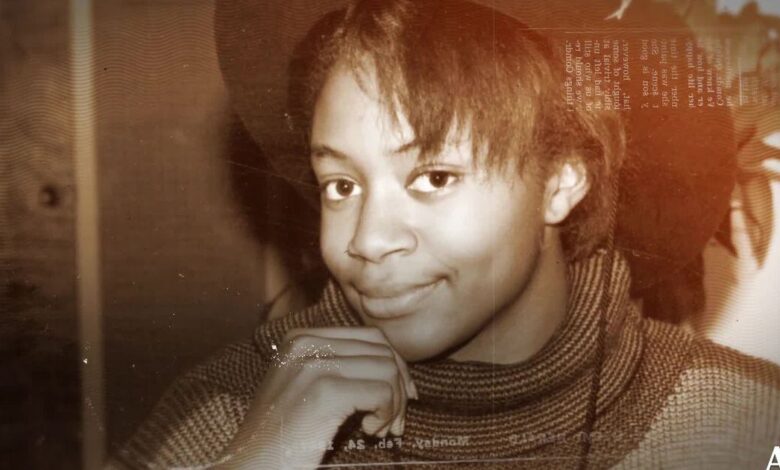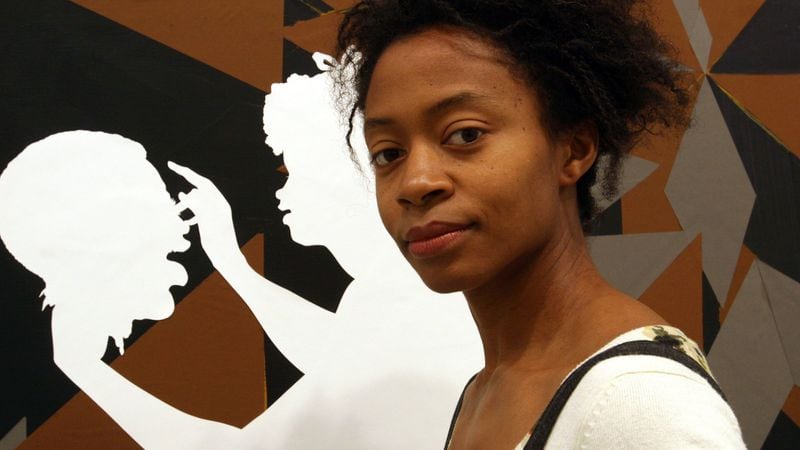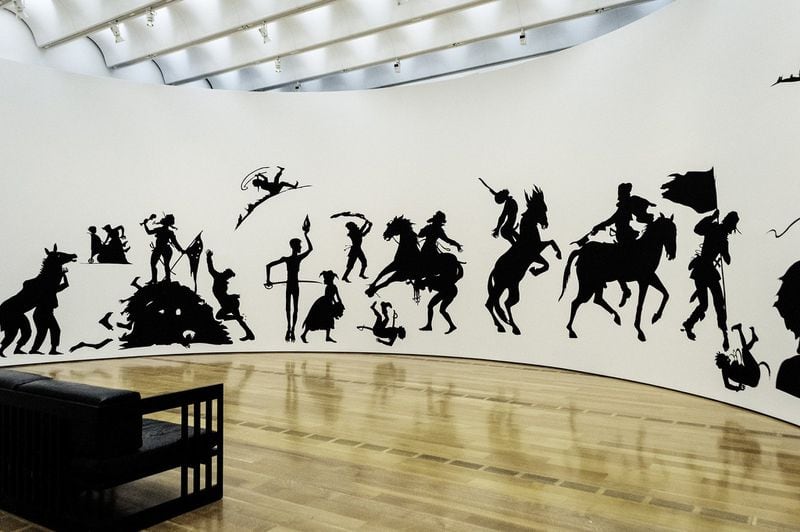Black History Month: Kara Walker

» MORE: Full coverage of Black History Month
“It seemed to me like an important and transformative piece to acquire,” said Michael Rooks, the museum’s Wieland Family Curator of Modern and Contemporary Art. “The installation is specific to our geographical context. It was important for it to have a home here.”
Born in Stockton, California, in 1969, Walker moved to Atlanta when she was 13. She studied at the Atlanta College of Art, earning her Bachelor of Fine Arts degree in 1991. She later earned her master’s at the Rhode Island School of Design in 1994.
In 1997, Walker, then 27, received a MacArthur Foundation Fellowship. Three years later, she would receive the Deutsche Bank Prize.
And she’s not the only artistic genius in her family: Her father, Larry, is a prolific artist and a professor emeritus at Georgia State University.
Kara Walker’s work has appeared in major collections at the Guggenheim Museum, the Museum of Modern Art and the Metropolitan Museum of Art, all in New York City. Her work has most recently been featured in the Cleveland Museum of Art.
» RELATED: Jean-Michel Basquiat: Artist made his colorful mark
» RELATED: ‘Tragic Mulatto’: Past depictions give way to today’s biracial pride
Despite Walker’s success, her work has been viewed as controversial, in part, Rooks said, because of the satirical depiction of sexual violence.
“I want the viewer to feel a giddy discomfort — the same sort that happens when I’m making the work,” Walker told the Guardian in a 2013 interview about her work.
That same discomfort can also be seen in “The Jubilant Martyrs of Obsolescence and Ruin.”
» RELATED: The story of Matt Baker, one of the earliest black comic book artists
“Because the work’s figures are stylized in a way that looks almost comical, it takes a while for the dark side of the work to sink into viewers,” Rooks said.
Walker’s almost-60-foot-wide installation explores race, gender, and sexual violence and is a direct response to the Confederate Memorial Carving on Stone Mountain, in whose shadow Walker grew up. Rooks said the piece works to reconcile African Americans’ oppressive and unjust experiences in the South against racial and gender stereotypes and efforts to advance equality in America.
“She essentially invites us to come to terms with it rather than hiding it or glossing over the horrible histories,” Rooks said.
BLACK HISTORY MONTH
Throughout February, we’ll spotlight a different African American pioneer in the Living section every day except Fridays. The stories will run in the Metro section on that day.
Go to www.ajc.com/black-history-month/ for more subscriber exclusives on people, places and organizations that have changed the world and to see videos and listen to Spotify playlists on featured African American pioneers.





